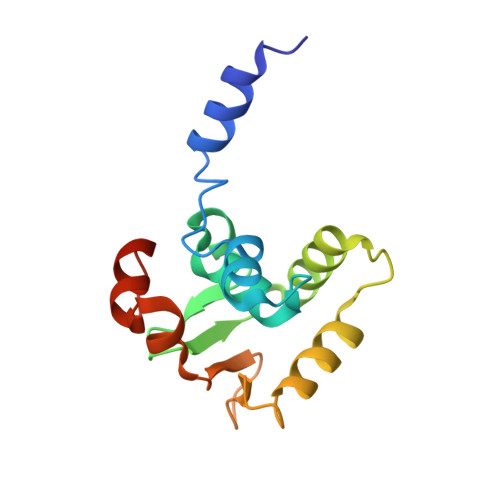Structural Analysis of the Autoinhibition of Ets-1 and Its Role in Protein Partnerships
Garvie, C.W., Pufall, M.A., Graves, B.J., Wolberger, C.(2002) J Biological Chem 277: 45529-45536
- PubMed: 12221090
- DOI: https://doi.org/10.1074/jbc.M206327200
- Primary Citation of Related Structures:
1MD0, 1MDM - PubMed Abstract:
The DNA-binding activity of the eukaryotic transcription factor Ets-1 (E26 avian erythroblastosis virus oncogene-E twenty-six) is negatively regulated by inhibitory regions that flank the ETS domain. Based on the results of solution studies, these N- and C-terminal inhibitory regions have been proposed to pack against the ETS domain and form an autoinhibitory module whose N terminus partially unfolds upon binding of Ets-1 to DNA. Mutations that disrupt autoinhibition of DNA binding also cause a structural change in the inhibitory region. We report here a crystallographic study of fragments of Ets-1 that provide structural details of the inhibitory module and the structural transition that accompanies DNA binding. The structures of free and DNA-bound Ets-1 fragments containing the ETS domain and the inhibitory regions confirm that the N-terminal inhibitory region contains two alpha-helices one of which unfolds upon Ets-1 binding to DNA. The observations from the crystal structure, coupled with mutagenesis experiments, allow us to propose a model for the inhibited form of Ets-1 and lend insight into the flexible interaction between Ets-1 and the acute myeloid leukemia 1 protein, AML1 (RUNX1).
- Department of Biophysics and Biophysical Chemistry and the Howard Hughes Medical Institute, Johns Hopkins University School of Medicine, Baltimore, Maryland 21205-2185, USA.
Organizational Affiliation:
















